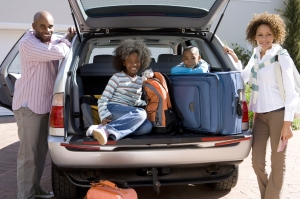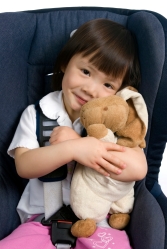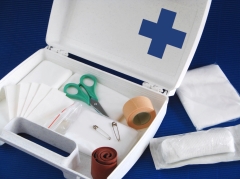 Would you like to take your family to see out-of-town relatives this holiday season? Do you shudder at the thought of spending hours in a car with your active, young children? While traveling with little ones can be challenging, it is not necessary to avoid it altogether. With a little planning and reasonable expectations, taking a trip can be a pleasant experience that is worth the effort.
Would you like to take your family to see out-of-town relatives this holiday season? Do you shudder at the thought of spending hours in a car with your active, young children? While traveling with little ones can be challenging, it is not necessary to avoid it altogether. With a little planning and reasonable expectations, taking a trip can be a pleasant experience that is worth the effort.
Before you go…
1. Tell your child about the trip. Share pictures of people and places you’ll see. Let him or her know what to expect.
2. Plan your trip, but remember to be flexible. Accept the reality that you may not be able to do everything you have planned. Allow time for  unexpected stops or emergencies. Plan stops every two hours or so. Allow your child to be active when out of the vehicle – he or she will need to burn off some energy! Bring a spill-proof bottle of bubbles, a ball, or a Frisbee (all great year-round choices) for children to play with for a bit at rest stops. Minimize the amount of time spent in the car – don’t get back into the car until everyone is ready to go again.
unexpected stops or emergencies. Plan stops every two hours or so. Allow your child to be active when out of the vehicle – he or she will need to burn off some energy! Bring a spill-proof bottle of bubbles, a ball, or a Frisbee (all great year-round choices) for children to play with for a bit at rest stops. Minimize the amount of time spent in the car – don’t get back into the car until everyone is ready to go again.
3. It is very difficult for children to be in a good mood if they are tired or hungry, so keep naptimes and mealtimes in mind. Try to travel at night or during naptimes if your child sleeps well in the car. Pack snacks and water for between meals. Order meals to go and drive to a park to eat (weather permitting), rather than expecting your child to sit quietly in a restaurant.
4. Take a touch of home with you. A special cuddle toy, blanket, or pillow can be reassuring to children when they are away from home.
5. Pack an activity backpack with books on CD or MP3s, a clip board with paper and washable markers, storybooks, a few simple toys, and other items to pull out when your child needs a distraction. Take old favorites, but be sure to include something that your child hasn’t seen before to maximize entertainment value. You might have older children keep a travel journal. Reserve the activities in the backpack for when your child really needs them. Don’t offer them if he or she is content – you will want the materials to last for the entire trip.
Safety first…
1. Don’t forget to have your vehicle inspected before hitting the road. Have your tires checked and other inspections done to prevent issues on the road.
2. Stash your luggage carefully. Utilize cargo nets and straps to secure gear in place. The most harmless item can become a dangerous projectile in the event of an accident.
 3. Pack an emergency kit. Include traditional first aid items, such as bandages, antiseptic, an instant ice pack, pain and/or fever medication, etc. Wet wipes, tissues, and a few plastic bags are other essentials that may have many helpful uses.
3. Pack an emergency kit. Include traditional first aid items, such as bandages, antiseptic, an instant ice pack, pain and/or fever medication, etc. Wet wipes, tissues, and a few plastic bags are other essentials that may have many helpful uses.
At home again…
Arrive home with plenty of time to unwind and unpack before returning to your everyday routine. It is normal for your child to be “out of sorts” for a while until he or she catches up on rest and routines become familiar again. Traveling with young children may not be stress free, but the memories and fun learning experiences that occur for parents and children alike make the adventures worth the effort.
Back to blog listing